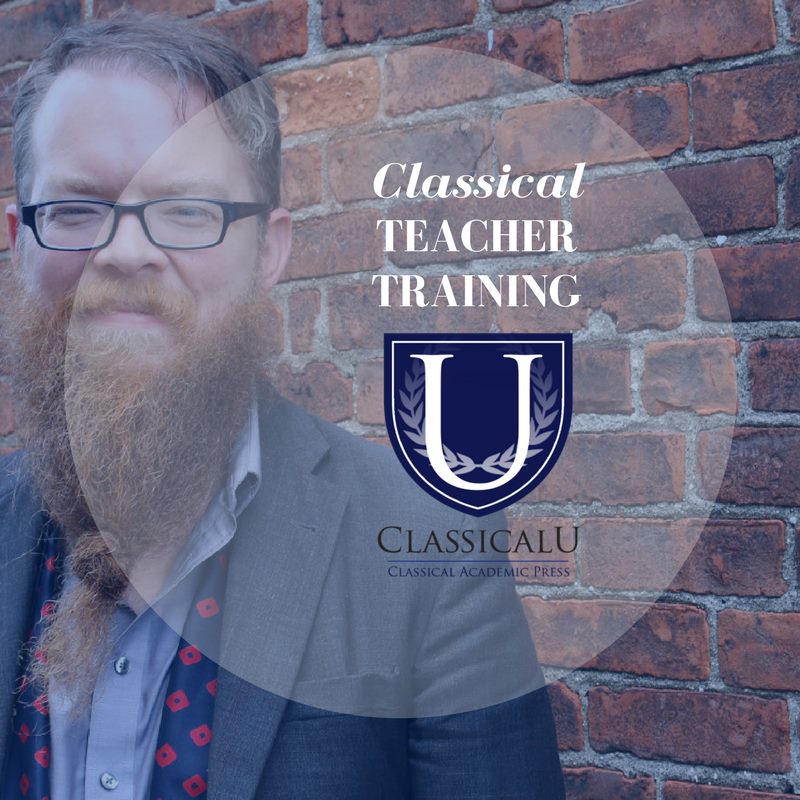by Christopher Perrin, PhD | Aug 12, 2010 | Interviews & Podcasts
Ashton Murphy has been studying Latin since the fourth grade at Grace Academy in Georgetown, Texas. After seven years of Latin studies, she was named as an overall top-performing Latin student at the national convention of the National Junior Classical League this August. In this interview, Ashton describes her love of Latin, the benefits and fun it has brought here and even recites a portion of a speech by Cicero (in Latin) that she recited in recent Latin oratory competitions. Interestingly, she cites observing the enthusiasm for Latin in older students as a primary cause of her early love of Latin. Now as a rising junior, she is sure to inspire younger Latin students, parents and teachers. If you have a Latin student or Latin class, be sure to have them listen to Ashton’s Latin adventure. Ashton says she might be headed for a career in journalism or law…but also loves art. I imagine she will be able to do several things well… Karen Moore, Ashton’s Latin teacher, also joins this interview.
Ashton Murphy2 8-10
by Christopher Perrin, PhD | Aug 2, 2010 | Education for Fun
Not all that classical educators do is grave, somber and serious. What we do is important, but that should not make us self-important. In fact in my book, one mark of a good teacher is that she laughs a lot. And why not? The classroom is a funny place.
So anyone who has taught children for any length of time will find a good deal to laugh about. Here is an episode from my headmaster days that set the entire staff laughing. Colleen, our first grade teacher came bursting into my office with her hand over mouth, trying unsuccessfully to hold back her loud guffaws. She relayed the following… She had been teaching the class that week about the second coming of Christ during the Bible class. During that same week, a construction crew was completing a job installing new brick outside and had reached Colleen’s second story classroom window. Now the construction crew had placed thick, protective plastic over the window and also raised the scaffolding level with the base of the window. Just a few minutes after discussing the second coming, a student suddenly pointed to the window and shouted, “Look, it’s Jesus!” Sure enough, there was man with a long beard striding across the air in front of the second story window. Another student shouted, “And he’s smoking!” And indeed he was.
If you have a comic classroom story–let’s hear it.
by Christopher Perrin, PhD | Jul 16, 2010 | Book Reviews
Every summer I read a few business books. The really good ones are actually filled with insight that not only help me as a publisher and consultant, but also illuminate other areas of the human enterprise. I put Jim Collins’ Good to Great in that category, as well as the Purple Cow by Seth Godin. Malcolm Gladwell’s books (though not strictly business books) are also generally enlightening—particularly The Tipping Point and Outliers.
Well this summer I have found another business book of universal value—Made to Stick: Why Some Ideas Survive and Others Die, by brothers Chip and Dan Heath. Chip is a Stanford business professor and Dan is a consultant and entrepreneur. The book sets out to explore what makes idea memorable and transferable—or what makes them sticky. They proceed inductively, looking at scores of sticky ideas and seeking to discover what traits are common to them all. The book is set up similarly to Collin’s Good to Great in which a team of graduate researches (led by Collins) set out to discover what common traits described companies that evolved from good to great companies. Jus as Collins discovers some six “Good to Great” principles, so the Heath brothers discover six “key qualities” that make ideas stick:
1. Simplicity: How do you strip an idea to its core without turning into a silly sound bite?
2. Unexpectedness: How do you capture people’s attention…and hold it?
3. Concreteness: How do you help people understand your idea and remember it much later?
4. Credibility: How do you get people to believe your idea?
5. Emotional: How do you get people to care about your idea?
6. Stories: How do you get people to act on your idea?
Now several of these key qualities resonated with me because of my study of rhetoric….and G.K. Chesterton (I did my dissertation on paradox in the apologetic of Chesterton). It is interesting to me that the Heath brothers proceed as businessmen doing an empirical study of what makes ideas sticky, and discover some key rhetorical principles in the process. If they had studied rhetoric (and there is no evidence in the book that they have), they would have also learned that ideas become persuasive and compelling when they characterized by ethos (credibility) and pathos (emotion). Under the canon of style, they would have learned the importance of being concrete, using effective metaphors and analogies. By studying the canon of invention they would have learned how important it is to determine what the discrete issue is for which one should argue (simplicity); by studying the canon of arrangement they would have discovered the importance crafting an arresting introduction that grabs and holds attention. The Heath brothers tell us that we need more fables to focus our attention and create concrete meaning. The first exercise of the ancient pre-rhetoric exercises (the progymnasmata) was a fable exercise. Virtually every important idea in the book is a restatement of a classic principle of rhetoric.
All this makes me very happy. Made to Stick is modern-day rediscovery and validation of ancient rhetoric without the authors even knowing that is so. Rhetorical theory could have taught them all their key qualities of sticky ideas and yet it is all the more romantic and gratifying that they discovered these qualities for the first time without hearing them first from Aristotle, Quintillian or Cicero. The business department has quietly joined arms with the classics department; the Heath brothers have done some of the same empirical work that Aristotle did 2500 years ago. For Aristotle too, studied what “key qualities” made ideas compelling, persuasive and “sticky.” Both Aristotle and the Heaths have studied intensely some important aspects of human nature. The Heaths site various modern examples of sticky ideas from army leadership to anti-smoking campaigns. Aristotle cites examples of ceremonial, forensic and political speech set in ancient Athens. But Aristotle and the Heaths are both seeking to uncover something crucial to human beings—what makes us remember and act upon an idea.
Chesterton too was called up by Made to Stick. Chesterton says that the chief pleasure of man is surprise. As I read through chapter on surprise (the chapter title is “Unexpected”) I could hear Chesterton laughing in the background. We all do love surprises don’t we? Chesterton also says that the reason we go to hear someone give a speech is precisely because we expect to hear what we don’t expect to hear—or else why go at all? He also believed it was necessary to startle people awake by using paradox to help people “see” the truth that was right before them, yet unseen. Chesterton was a master of paradox, but paradox that illuminated and did not merely entertain. Thus he commonly said such things as “the madman is not the man who has lost his reason, but the man who has lost everything but his reason.” Well paradox is a rhetorical trope and a very effective attention-grabber and sustainer. While the Heaths don’t use the word paradox, they do understand well the basic impact of surprise—“it jolts us to attention.”
Finally, Made to Stick, has (and makes) obvious application to teachers. Teachers are daily purveyors of ideas. Teachers are obliged to make good ideas stick. How can this be done? A teacher could do worse than to strip the idea down to its core (simplicity), teach the idea as a surprising mystery to be solved, create tension and debate in the classroom (surprise), and generously stir in concrete language, visuals (concreteness), credible authority and evidence (credibility) along with an appeal to human emotion (emotion) and finally enfolding the wisdom of the idea in a compelling story or two (story). It turns out that what makes ideas stick are what make teachers stick as well.
by Christopher Perrin, PhD | Jul 8, 2010 | Interviews & Podcasts
How to Advance a Classical School: An Interview with School Development Expert Peter Baur. Peter Baur has spent his professional career helping schools grow and develop and has spent nearly 10 years helping advance Westminster Academy of Memphis, TN. Peter talks of how crucial it is to create a clear mission then clearly communicate it through every staff person, every event, every opportunity. New classical schools will benefit greatly from Peter’s experience and wisdom.
Peter Baur Interview
by Christopher Perrin, PhD | Jun 30, 2010 | Interviews & Podcasts
Recently we interviewed Karen Moore, veteran Latin teacher and author from Grace Classical Academy of Georgetown, Texas. In this interview, Karen cogently describes the benefits of studying Latin and offers a variety of insights and advice to new Latin teachers and to those curious about the value of studying Latin. Karen is a unique blend of Texas and Rome–and is articulate as she is passionate. Click any of the links below to hear veteran Latin teacher Karen Moore share a variety of insights, recommendations and advice relative to the teaching of Latin.
Karen’s Bio and Introduction
Reading Latin
Latin Pedagogy Bike Riding
Why Latin
More Benefits to Latin
Growing an English Vocabulary
Improved Scores
Mental Training
Kid’s Favorite Subject
Teaching Tips
National Latin Exam
Advice to New Latin Teachers







